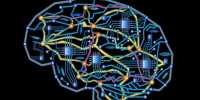Brain-computer interfaces have already been created that allows people to scale a word or move a cursor using just their thinking, and future advances in this area could significantly improve the lives of some people with disabilities. An AI that can freely interpret and broadcast a person’s thoughts where it is lost can restore communication skills, and even after this dream has gone a long way, Finnish researchers have taken steps toward that goal. The computer was then able to detect certain activity patterns that whenever a person saw a face that matched what they were looking for and used this data to create the kind of facial image that the person remembered. Based on this information, the interface was able to create new images of faces that contain relevant features; the success rate is 63 percent. A complete essay of the experiment has been published up in the scientific report Journal.
The team recruited 31 participants who appeared to be the successors of the human face image while recording the activity of the electrical brain. They were then asked to focus on specific features, such as smiling faces or older faces, when they were fed into the electroencephalogram (EEG) neural network. In addition to helping those with communication problems, the researchers said the technology could one day be used to help people flow creative juices. In a statement, study author Touch Rutsalo explained that if you are unable to draw or illustrate something, the computer can help you achieve the goal. It can only observe the focus and predict what you want to create.
While the strategy does not recognize thoughts but responds to the connections we have with the mental departments, so when we are not able to identify a specific older person who is thinking of a partner, we can probably get an idea of what they do with the nursing home. Involved,” said senior researcher Mitchell Space. Although the technology is still in its infancy and only a wide range of concepts such as age, color, or whether a person is smiling in a person’s mind can be understood – the study authors say their work is significant because it proves that a computer can be subjective based on an EEG, Trained to read thoughts.
They named their strategy Neuroadditional Generating Modeling and now it will be developed to create an interface that is capable of understanding the more subtle elements of a person’s thinking.
















